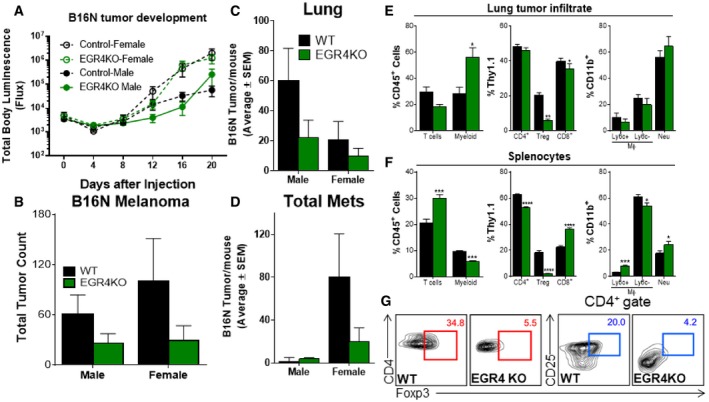All lung tumors were isolated from both WT and EGR4KO mice along with spleens and analyzed for CD45
+ cells. WT lung tumors were 5.407 ± 1.843% CD45
+, while EGR4KO mice were 12.445 ± 2.239% CD45
+. WT spleens were 83.92 ± 3.344% CD45
+, while EGR4KO mice were 95.13 ± 1.856% CD45
+. Relative distributions of T and myeloid cells within the CD45
+ populations were determined by flow cytometric analysis. (E, F) Distributions of T and myeloid cells found within lung tumors (E) versus the spleen (F). (G) Representative FACS plots depicting gating strategies for defining Treg cell populations in panels (E and F); staining controls are in
Appendix Fig S7.

